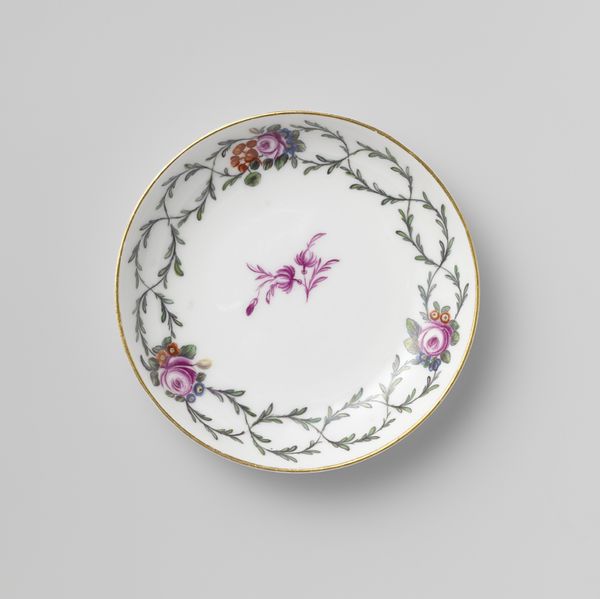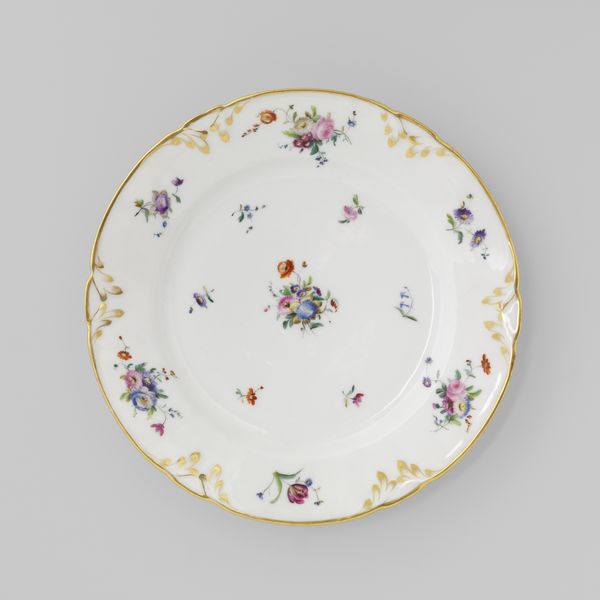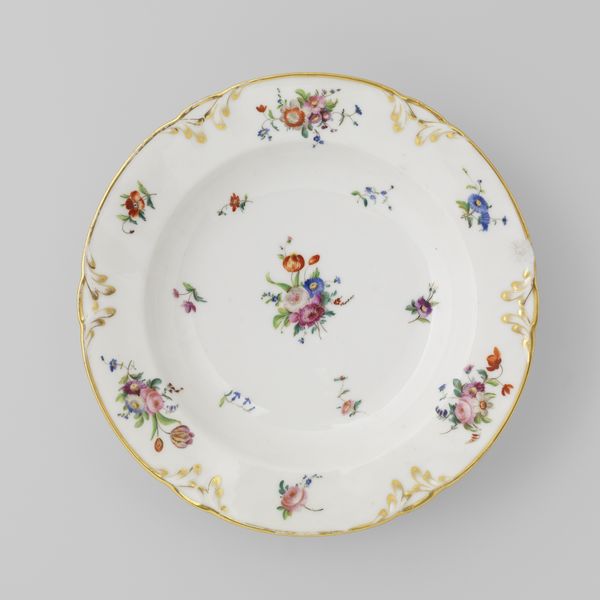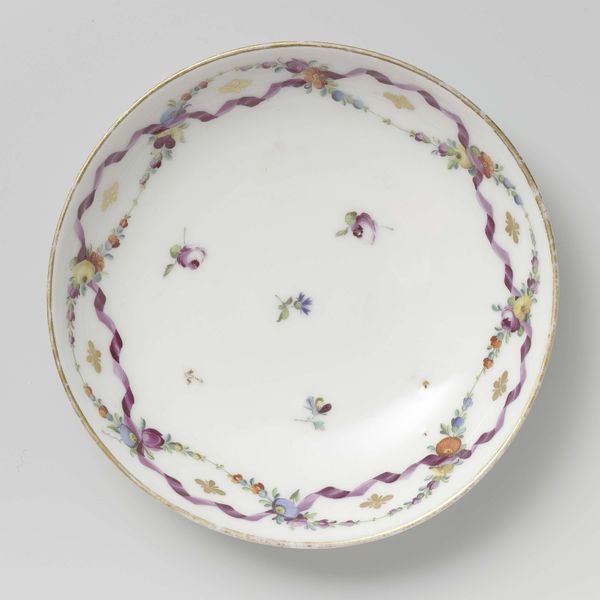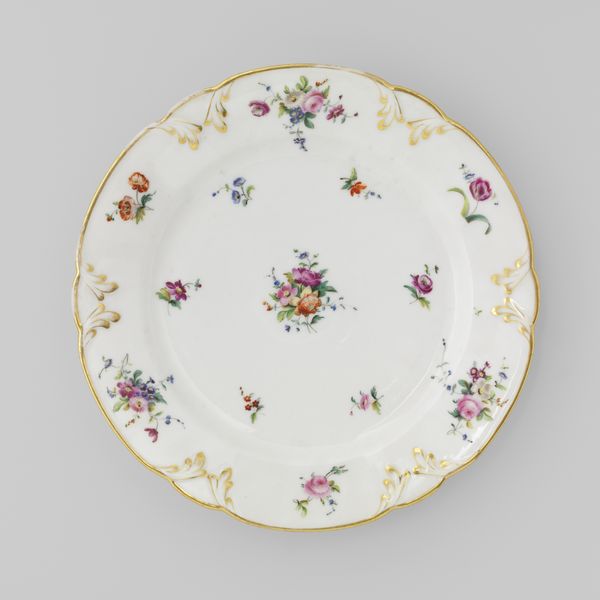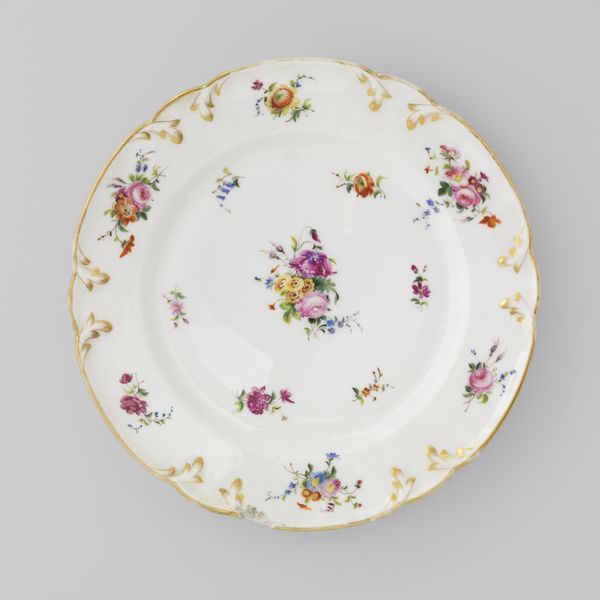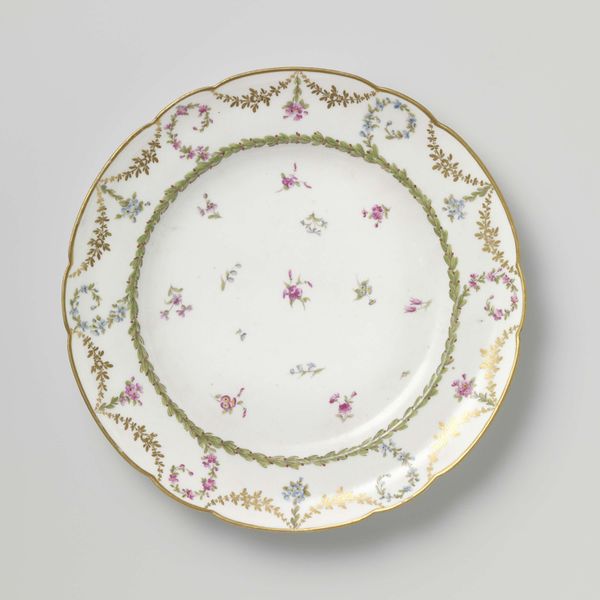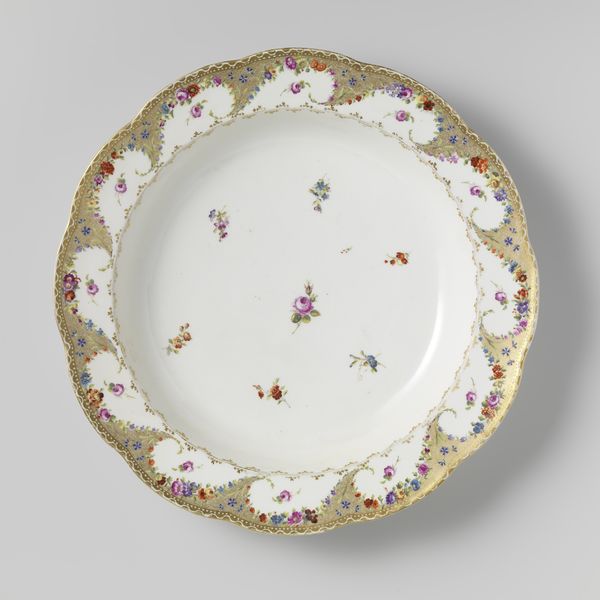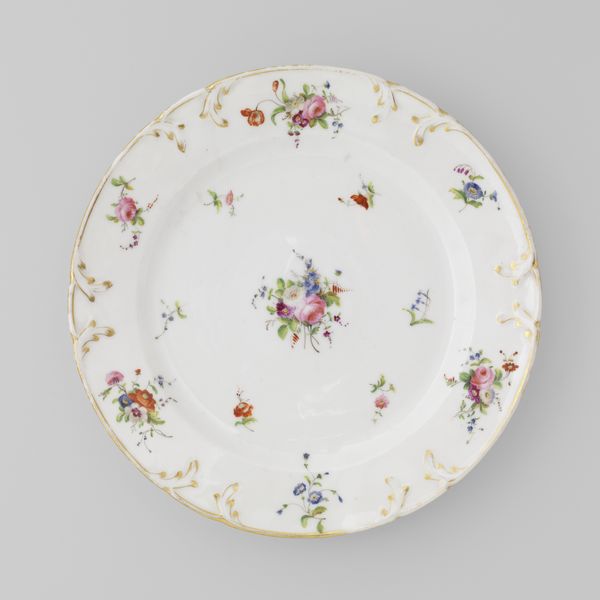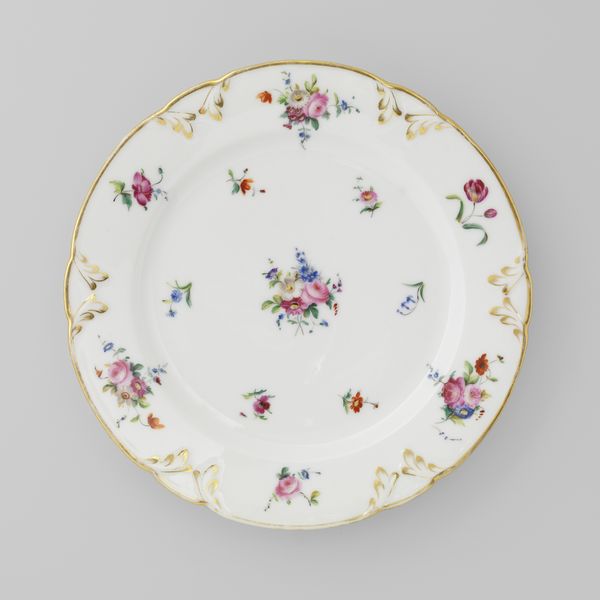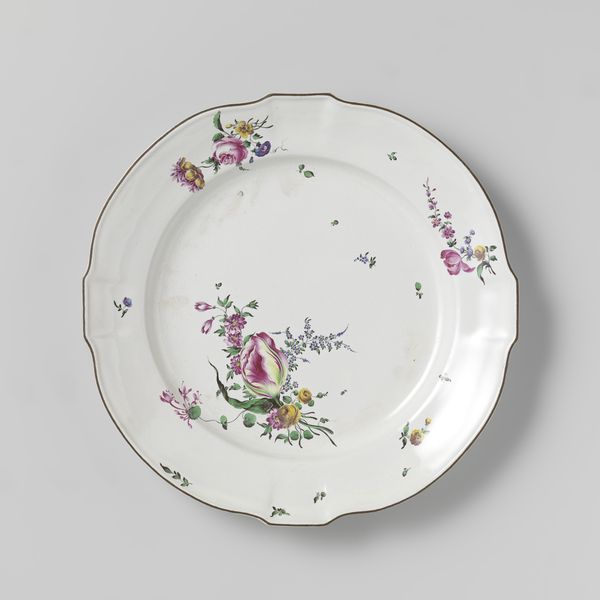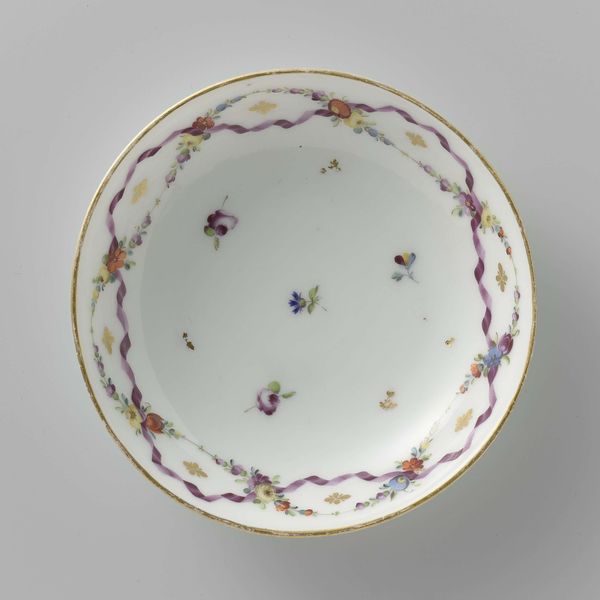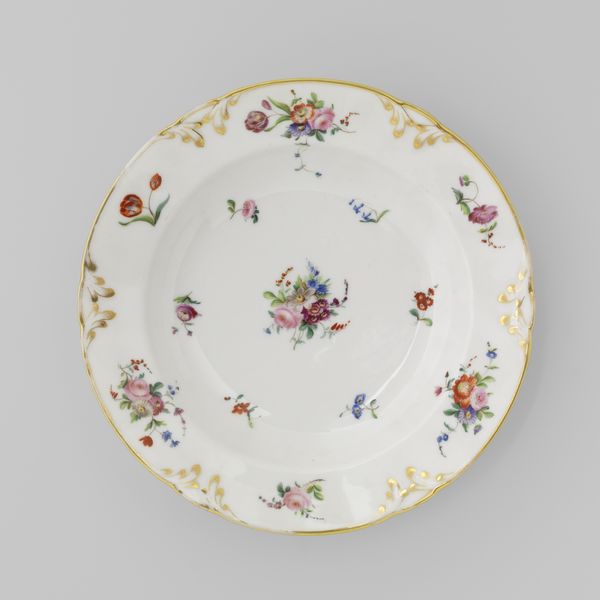
Schotel, beschilderd met een zigzaglint, waaromheen een tak met bladeren slingert c. 1778 - 1782
0:00
0:00
Dimensions: height 2.6 cm, diameter 12.8 cm
Copyright: Rijks Museum: Open Domain
This small plate was made in Loosdrecht, likely in the late 18th century, using porcelain and enamel paint. Porcelain is made by firing clay at extremely high temperatures; this one would have been fired at least twice, once to create the ceramic body, and again after the decoration was applied. The method of production is particularly relevant here. Loosdrecht, like other European manufacturers, was trying to emulate Chinese porcelain. This was a painstaking endeavor, involving alchemical experimentation. The resulting ware became synonymous with luxury and refinement. This plate, with its delicate floral decoration and zigzag ribbon, is a direct expression of that ambition. It’s easy to overlook the incredible amount of labor that went into this one small object. Mining and refining the clay, perfecting the firing process, hand-painting the decoration. This plate is a testament to the expansion of global trade, and the transformation of skilled labor into a new form of consumerism.
Comments
No comments
Be the first to comment and join the conversation on the ultimate creative platform.
